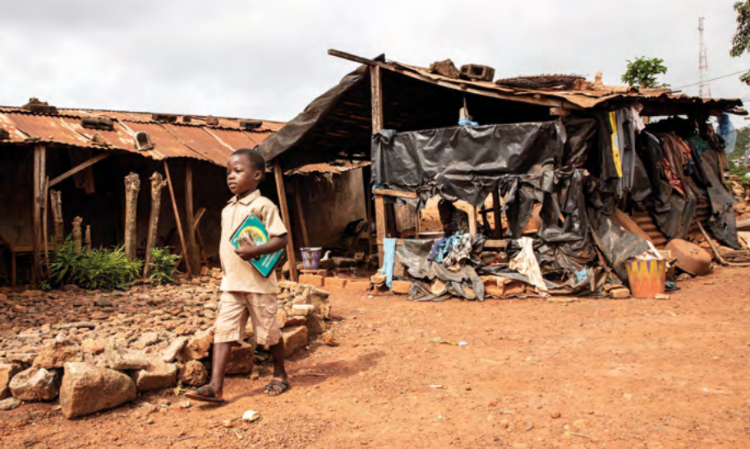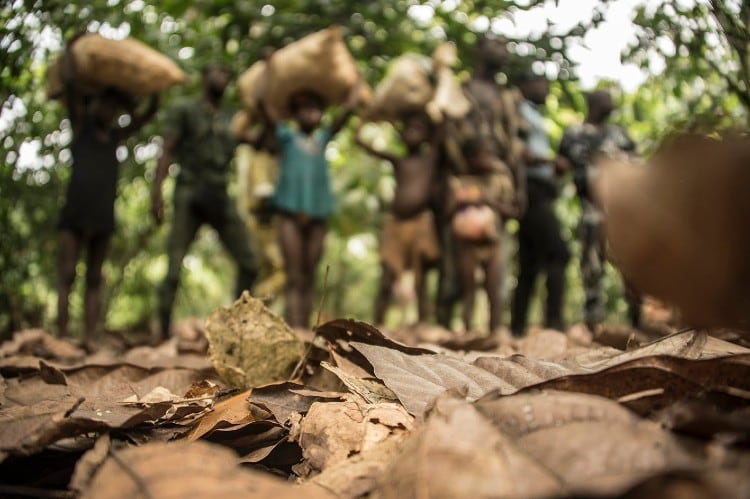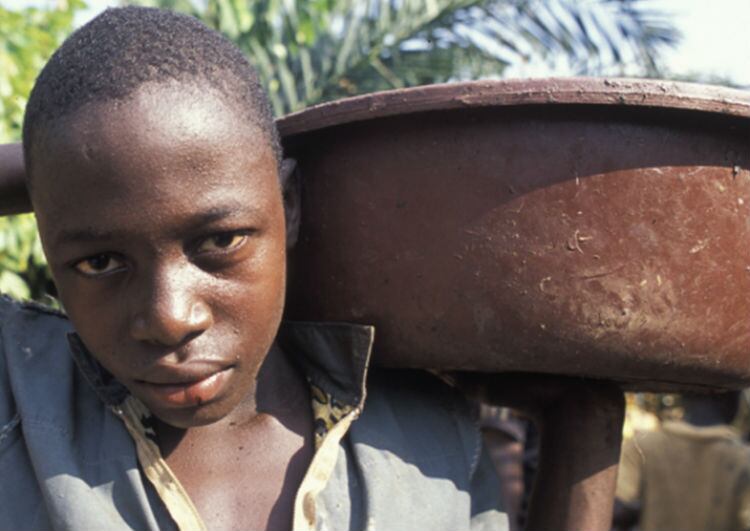“Cocoa and chocolate companies are committed to launching a new public-private partnership with the producing and consuming governments, UN agencies, farmer groups, and civil society organisations to tackle the root causes of child labour, which is heavily associated with poverty,” said WCF president Richard Scobey.
Scobey’s comments were published on the WCF’s Cocoa Matters website and come days after a delayed and controversial US government-funded report from a National Opinion Research Centre (NORC) at the University of Chicago found that more than two-fifths (43%) of all children aged between five and 17 in cocoa-growing regions of Cote d’Ivoire and Ghana – the world’s largest cocoa producers – are engaged in hazardous work.
Concern for the industry
The fact that hazardous child labour remains rife in some of the world’s major chocolate manufacturers' supply chains, despite significant efforts to abolish the abuse in the past 20 years, is a concern for the industry, which Scobey, as head of the WCF, an influential body with more than 100 members, recognises.
What is clear now is that targets to reduce child labour were set without fully understanding the complexity and scale of a challenge heavily associated with poverty in rural Africa -- Richard Scobey, President WCF
At the beginning of the year, Scobey called on the industry as a whole to do more on tackling farmer poverty and although it makes uncomfortable reading, he says this new research by NORC provides important insights for all those working to end child labour in cocoa in Cote d’Ivoire and Ghana, where most of chocolate's main ingredient is grown.
He also notes the report confirms that the more than 60% increase in total cocoa production in the two West African countries over the past 10 years did not bring a similar surge in child labour – and “government and company programmes led to a reduction in child labour”.
He says the conclusion is consistent with NORC’s second piece of research commissioned by the World Cocoa Foundation.
“It shows that hazardous child labour - for example, lifting heavy weights, using sharp tools, spraying pesticides - has been reduced by one-third in communities where company programmes are in place. This finding is consistent with results from work by the International Cocoa Initiative (ICI), which shows that child labour can be reduced by one-half among those child labourers identified by company due diligence measures.”
Investment
Scobey says WCF member companies have invested more than $215m since 2001 in programmes in partnership with Ivorian and Ghanaian cocoa communities, to fight child labour.
“These investments have focused on boosting and diversifying farmer income, child labour monitoring and remediation through community and supply chain-based systems, gender empowerment, construction and rehabilitation of schools, provision of school supplies and other education support services, and awareness-raising – all in close partnership with the governments and civil society organisations.”
Kristy Leissle, co-founder, Cocoapreneurship Institute of Ghana, Affiliate Faculty, African Studies, University of Washington, and also a member of ConfectioneryNews' editorial board, has spent many years working in Ghana’s cocoa sector.
She says in rural cocoa-growing areas, poverty of infrastructure is a daily, oppressive reality – and shapes every aspect of life.
“When we understand what lack of infrastructure means, in a realistic way, I believe we can better comprehend why it is so difficult to keep each and every child out of harmful labour scenarios. Weak, unreliable, or nonexistent infrastructure adds to the context of an overwhelming workload … and is why child labour, including tasks that can be dangerous, persists.”
She says sustainability plans and child labour remediation programmes for Nestlé, Mars Wrigley, Mondelēz International, and Olam, among others, identify the critical need for infrastructure investment. And the governments of Cote d’Ivoire and Ghana, continue their development strategies to improve and expand national infrastructure.
Speaking of the NORC report, Scobey says it is important to note it is not about “the abhorrent practices of forced child labor or forced adult labour in Cote d’Ivoire and Ghana, which other studies show is extremely rare in the cocoa sector”.
Companies, the governments of Cote d’Ivoire and Ghana, civil society organisations and all stakeholders involved in the fight against child labour, now know more about what works – and are scaling up these efforts for impact, he says.
Future action plans co-ordinated by the WCF include:
- To protect children, leading companies will increase the coverage of child labour monitoring and remediation systems to 100% by 2025, from about 20% in 2019, in their direct supply chains in Cote d’Ivoire and Ghana.
- To ensure access to quality education, the government in Cote d’Ivoire intends to launch a $120 million pooled funding facility for primary education in partnership with the Jacobs Foundation that aims to reach 5 million children, with $25 million expected from industry.
- To help raise farmers out of poverty, companies have supported the new Living Income Differential pricing policy of Côte d’Ivoire and Ghana in 2020/21 that will provide an estimated $1.2 billion in additional revenues for cocoa farmers on top of official market prices.
- To boost household incomes and yields, leading companies will reach 100% coverage by 2025 of all farmers in their direct supply chains in Cote d’Ivoire and Ghana with training, coaching, or farm development plans on good agricultural practices.
Explaining why the chocolate industry has missed deadlines since 2001 to eradicate child labour from its supply chain, he says: “What is clear now is that targets to reduce child labour were set without fully understanding the complexity and scale of a challenge heavily associated with poverty in rural Africa. They also did not anticipate the significant increase in cocoa production over the past decade.”




